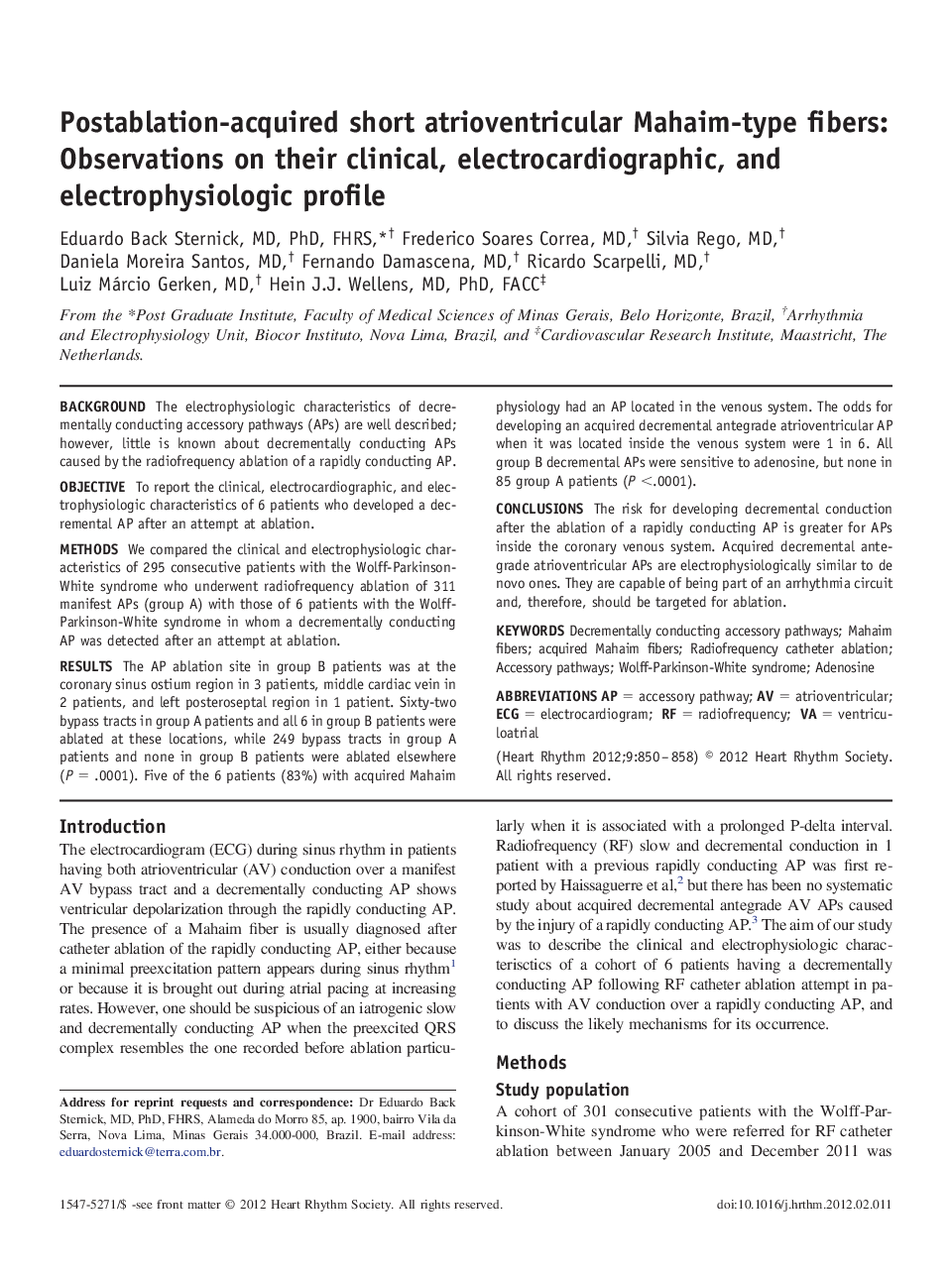| Article ID | Journal | Published Year | Pages | File Type |
|---|---|---|---|---|
| 2922553 | Heart Rhythm | 2012 | 9 Pages |
BackgroundThe electrophysiologic characteristics of decrementally conducting accessory pathways (APs) are well described; however, little is known about decrementally conducting APs caused by the radiofrequency ablation of a rapidly conducting AP.ObjectiveTo report the clinical, electrocardiographic, and electrophysiologic characteristics of 6 patients who developed a decremental AP after an attempt at ablation.MethodsWe compared the clinical and electrophysiologic characteristics of 295 consecutive patients with the Wolff-Parkinson-White syndrome who underwent radiofrequency ablation of 311 manifest APs (group A) with those of 6 patients with the Wolff-Parkinson-White syndrome in whom a decrementally conducting AP was detected after an attempt at ablation.ResultsThe AP ablation site in group B patients was at the coronary sinus ostium region in 3 patients, middle cardiac vein in 2 patients, and left posteroseptal region in 1 patient. Sixty-two bypass tracts in group A patients and all 6 in group B patients were ablated at these locations, while 249 bypass tracts in group A patients and none in group B patients were ablated elsewhere (P = .0001). Five of the 6 patients (83%) with acquired Mahaim physiology had an AP located in the venous system. The odds for developing an acquired decremental antegrade atrioventricular AP when it was located inside the venous system were 1 in 6. All group B decremental APs were sensitive to adenosine, but none in 85 group A patients (P <.0001).ConclusionsThe risk for developing decremental conduction after the ablation of a rapidly conducting AP is greater for APs inside the coronary venous system. Acquired decremental antegrade atrioventricular APs are electrophysiologically similar to de novo ones. They are capable of being part of an arrhythmia circuit and, therefore, should be targeted for ablation.
